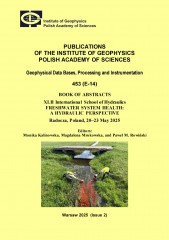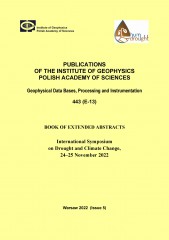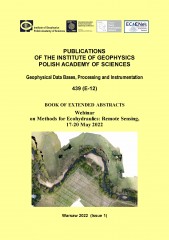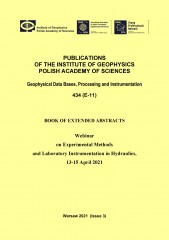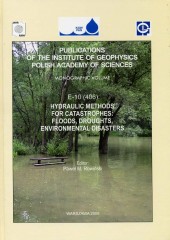BROWSE - VOLUME LIST
- A - Physics of the Earth's Interior
- B - Seismology
-
C - Geomagnetism
C-119, C-118, C-117, C-116, C-115, C-114, C-113, C-112, C-111, C-110, C-109, C-108, C-107, C-106, C-105, C-104, C-103, C-102, C-101, C-100, C-99, C-98, C-97, C-96, C-95, C-94, C-93, C-92, C-91, C-90, C-89, C-88, C-87, C-86, C-85, C-84, C-83, C-82, C-81, C-80, C-79, C-78, C-77, C-76, C-75, C-74, C-73, C-72, C-71, C-70, C-69, C-68, C-67, C-66, C-65, C-64, C-63, C-62, C-61, C-60, C-59, C-58, C-57, C-56, C-55, C-54, C-53, C-52, C-51, C-50, C-49, C-48, C-47, C-46, C-45, C-44, C-43, C-42, C-41, C-40, C-39, C-38, C-37, C-36, C-35, C-33, C-32, C-31, C-30, C-29, C-28, C-27, C-26, C-25, C-24, C-23, C-22, C-21, C-20, C-19, C-18, C-17, C-16, C-15, C-14, C-13, C-12, C-11, C-10, C-9, C-8, C-7, C-6, C-5, C-4, C-3, C-2, C-1
-
D - Physics of the Atmosphere
D-79, D-78, D-77, D-76, D-75, D-74, D-73, D-72, D-71, D-70, D-69, D-68, D-67, D-66, D-65, D-64, D-63, D-62, D-61, D-60, D-59, D-58, D-57, D-56, D-55, D-54, D-53, D-52, D-51, D-50, D-49, D-48, D-47, D-46, D-44, D-45, D-43, D-42, D-41, D-40, D-39, D-38, D-37, D-35, D-34, D-33, D-32, D-31, D-30, D-28, D-27, D-26, D-25, D-24, D-23, D-22, D-21, D-20, D-19, D-18, D-17, D-16, D-15, D-14, D-13, D-12, D-11, D-10, D-9, D-8, D-7, D-6, D-5, D-4, D-3, D-2, D-1
- E - Hydrology
- P - Polar Research
- M - Miscellanea
-
Online First
E - Hydrology (formerly Water Resources)
Book of Abstracts. XLII International School of Hydraulics: FRESHWATER SYSTEM HEALTH: A HYDRAULIC PERSPECTIVE. Radocza, Poland, 20–23 May 2025
Editor(s): Kalinowska M., Mrokowska M., Rowiński P.
Volume: 453
Series: E-14
DOI: 10.25171/InstGeoph_PAS_Publs-2025-022
Volume: 453
Series: E-14
DOI: 10.25171/InstGeoph_PAS_Publs-2025-022
The 42nd International School of Hydraulics, titled “Freshwater System Health: A Hydraulic Perspective”, held on May 20–23, 2025, in Radocza near Kraków, continued a series of events focused on broadly understood hydraulics. The conference covered the fundamentals of hydraulics in the context of understanding and managing the health of rivers, lakes, and other aquatic ecosystems.
Book of Extended Abstracts. International Symposium on Drought and Climate Change, 24–25 November 2022
Author(s):
Volume: 443
Series: E-13
DOI: 10.25171/InstGeoph_PAS_Publs-2022-028
Volume: 443
Series: E-13
DOI: 10.25171/InstGeoph_PAS_Publs-2022-028
The International Symposium on Drought and Climate Change was organized within the frame-work of the NCN SHENG project HUMDROUGHT (humdrought.igf.edu.pl), by the Hohai University (China) and the Institute of Geophysics, Polish Academy of Sciences (Poland). The meeting was held online from 24–25 November 2022.During the symposium, 4 Keynote and 19 standard Speeches were presented by representa-tives of 11 countries, namely: China, Columbia, Ethiopia, Germany, India, Iran, Italy, Nether-lands, Poland, Spain, and Tunisia. The number of participants in the Symposium reached al-most 50.Drought-related issues have been discussed, focusing on multiple spatiotemporal scales to pin-point global to continental trends, as well as showing how drought affects specific countries and catchments.
Book of Extended Abstracts. Webinar on Methods for Ecohydraulics: Remote Sensing, 17-20 May 2022
Author(s):
Volume: 439
Series: E-12
DOI: 10.25171/InstGeoph_PAS_Publs-2022-001
Volume: 439
Series: E-12
DOI: 10.25171/InstGeoph_PAS_Publs-2022-001
The present work aims to summarize the outcomes of the webinar on Remote Sensing in Ecohydraulics, co-organized by the Institute of Geophysics of the Polish Academy of Sciences, the IAHR Committee on Ecohydraulics, the IAHR Poland Young Professional Network and ECoENet.During the webinar, four keynote lectures and twelve technical notes, mainly coming from young researchers, provided the framework of the state-of-the-art of new tools, methods, equipment and methodologies for monitoring water habitats, and they aimed to share knowledge and address data survey needs.In terms of the geographical distribution of the abstracts, more than 10 countries were represented, showing the worldwide importance of the topic, and the willingness for developing international and transdisciplinary connections.
Book of Extended Abstracts. Webinar on Experimental Methods and Laboratory Instrumentation in Hydraulics, 13-15 April 2021
Author(s):
Volume: 434
Series: E-11
DOI: 10.25171/InstGeoph_PAS_Publs-2021-039
Volume: 434
Series: E-11
DOI: 10.25171/InstGeoph_PAS_Publs-2021-039
The recent development of equipment and software for hydraulic measurements, data analysis, and visualization, has introduced new opportunities but also new challenges for research and technical cadre.
Hydraulic Methods for Catastrophes: Foods, Droughts, Environmental Disasters
Editor(s): Rowiński P.
Volume: 406
Series: E-10
Volume: 406
Series: E-10
The overall theme of the 28th School of Hydraulics was Hydraulic Methodsfor Catastrophes: Floods, Droughts, Environmental Disasters. Most of the presentationswere therefore devoted to a variety of problems that may contribute to increaseour knowledge in the description or prediction of extreme situations that wedeal with in aquatic environment and where hydraulic methods offer important solutions.All the papers presented during the School (after thorough review procedure)are presented in this volume.


